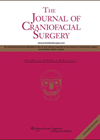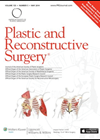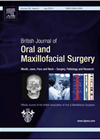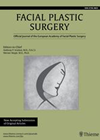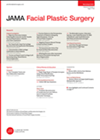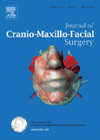
Journal Reviews
Purse string closure after excision of paediatric facial lesions
Circular excision and purse-string closure has been described for infantile haemangiomas as an alternative to lenticular excision. Records of 77 consecutive paediatric patients with facial skin lesions treated with circular excision and purse-string closure from 2007-2014 were reviewed. Lesions excised...
Mid cheek lift
Middle third rejuvenation is a hot topic in facial plastic surgery nowadays. Surgical versus non-surgical treatments, lifting procedures versus volumising procedures, transtemporal, transblepharoplasy, deep plane, percutaneou. The number of choices clearly points out the lack of a standard procedures to...
Righting the paralysed lip
Many surgical procedures that otolaryngologists perform put the facial nerve at risk of injury, a complication that the surgeon and patient fear alike. Unfortunately, injuries to the nerve can and do happen despite adequate precautions, and facial paralysis may be...
The initial management of nasal trauma
Nasal trauma and fractures are some of the most prevalent clinical problems in a facial surgery practice. Fractures of the nose are the most common facial fractures and reported to be the third most common fracture of the human skeleton....
Management of post traumatic pseudo-telecanthus
Injuries to the nasal and peri-nasal region are common. Indeed the nasal bones are reported to be the most commonly fractured facial bone. While nasal trauma and deformity are commonly recognised and treated, injuries to adjacent structures are easily missed...
Facial asymmetry in patients with deviated noses
Rhinoplasty of a deviated nose is known to be a challenge of its own kind, especially when patients presenting with a deviated nose are unaware of their underlying facial asymmetry. Patients with a successfully straightened nose, continue to perceive their...
Guidelines for the management of craniosynostosis
A Dutch national working group developed this guideline with representatives from the societies representing 11 different specialties and the Dutch national patients’ society. Medical, social and psychological aspects of care for both syndromic and non-syndromic craniosynostosis are included, for both...
Facial reconstruction with polyethylene implants
Planning reconstructive surgery for complex craniofacial defects challenges even the most experienced of surgeons. In most cases surgery is undertaken to improve anatomical functioning. However, the anatomical structure of these regions is also critical to facial aesthetics and patient satisfaction...
Facial sensory rehabilitation
The authors of this paper show the results of their method for facial sensory rehabilitation using cross-face sural nerve grafts in three patients. All three patients had hemifacial anaesthesia after trauma or intracranial tumour resections and their symptoms varied from...
Skin grafts vs local flaps in reconstruction of nasal defects
Nasal defects commonly are a result of removal of skin lesions. Cosmetic outcomes of local flap reconstructions are commonly accepted to be superior in comparison to skin grafts. However, local flap reconstructions require more adjunctive procedures than single-stage operations based...
Facial asymmetry and nasal septal deviation
The authors’ aim was to evaluate the relationship between nasal septal deviation and facial asymmetry. They performed a study of 60 patients who had facial 3D CT scans from April 2011 to March 2014 and confirmed facial asymmetry, who were...
A review on contemporary options for facial reanimation
This paper is an up-to-date review on surgical and non-surgical options for the treatment of facial paralysis. The authors thoroughly describe recent techniques, like the masseter-to-facial nerve transfer, explaining the advantages over other more popular transfer techniques like the hypoglossal-to-facial...

